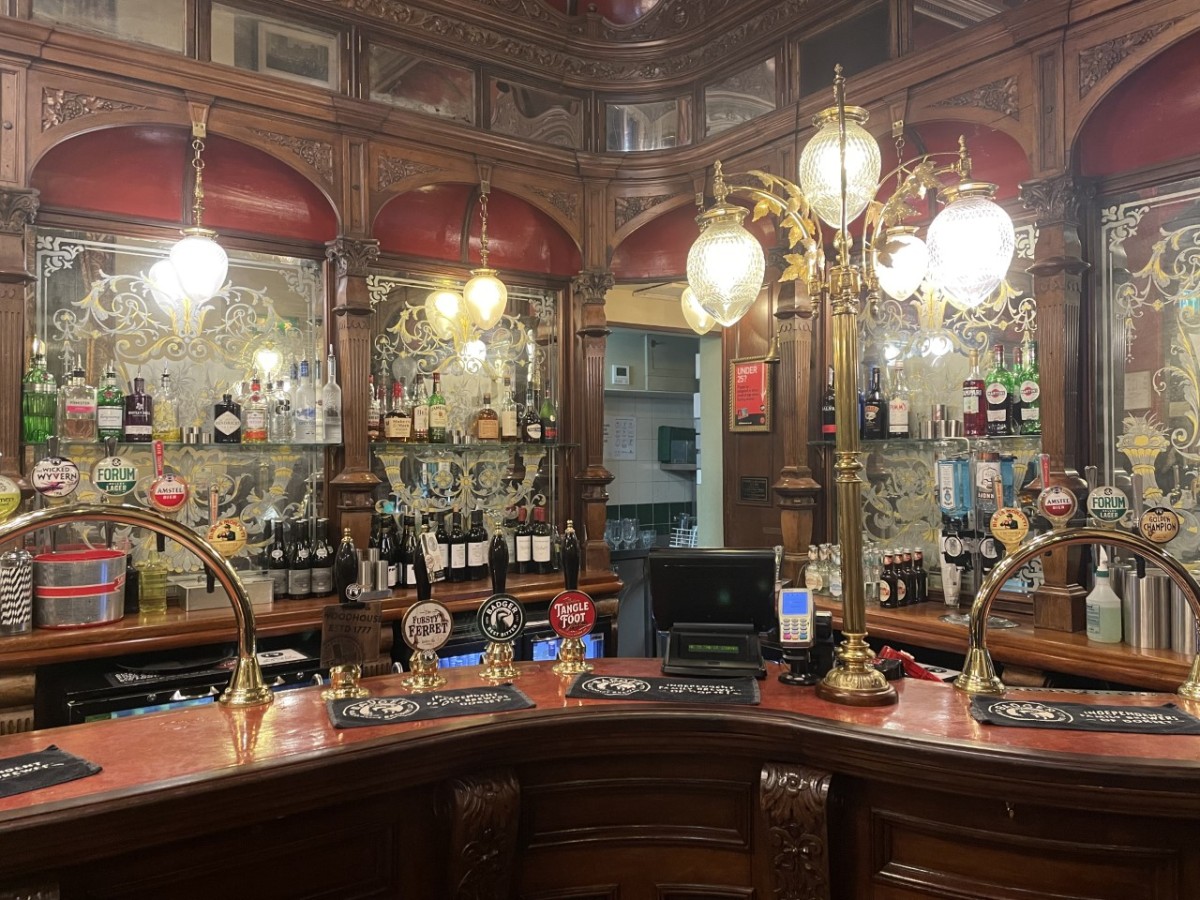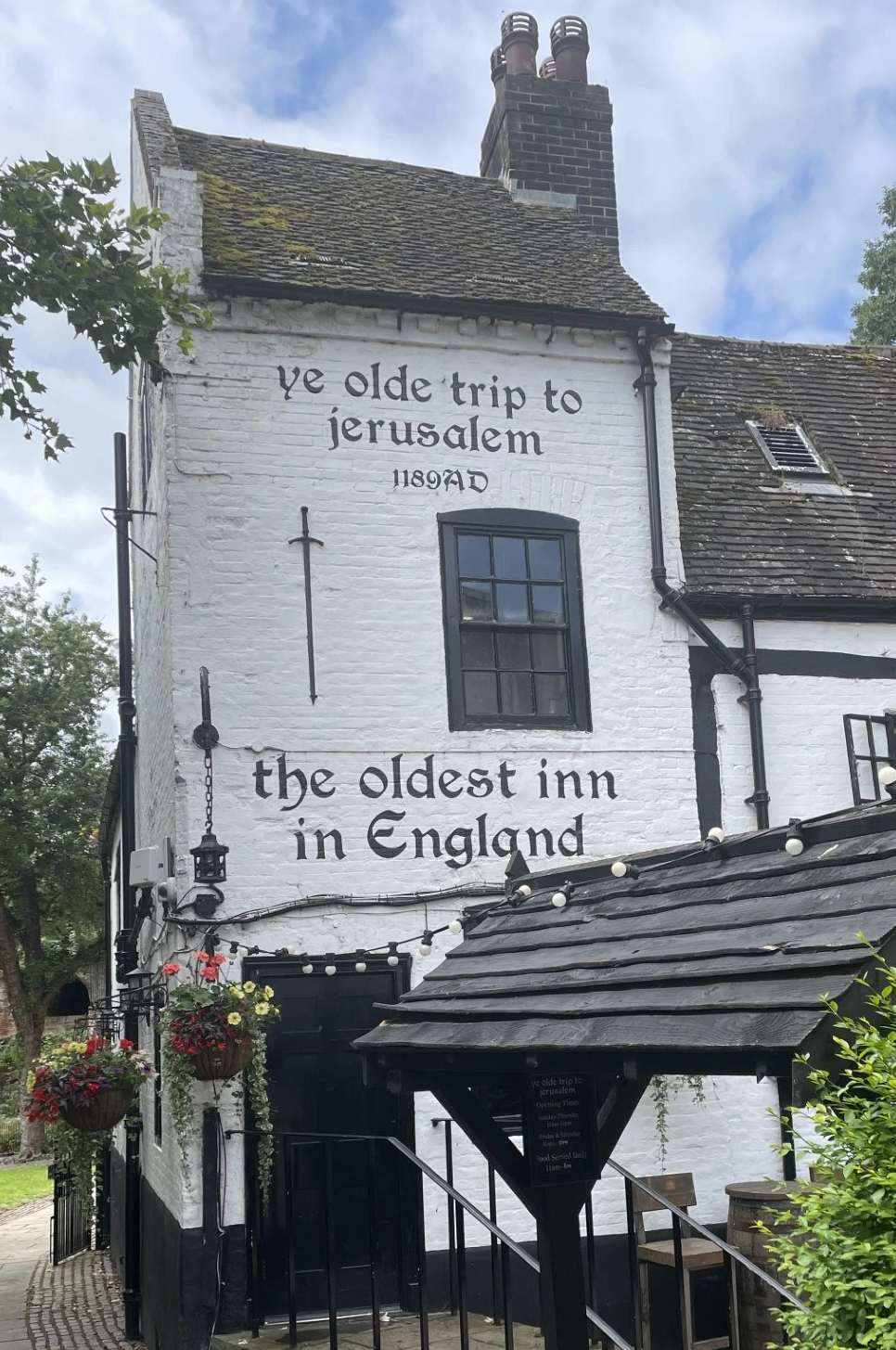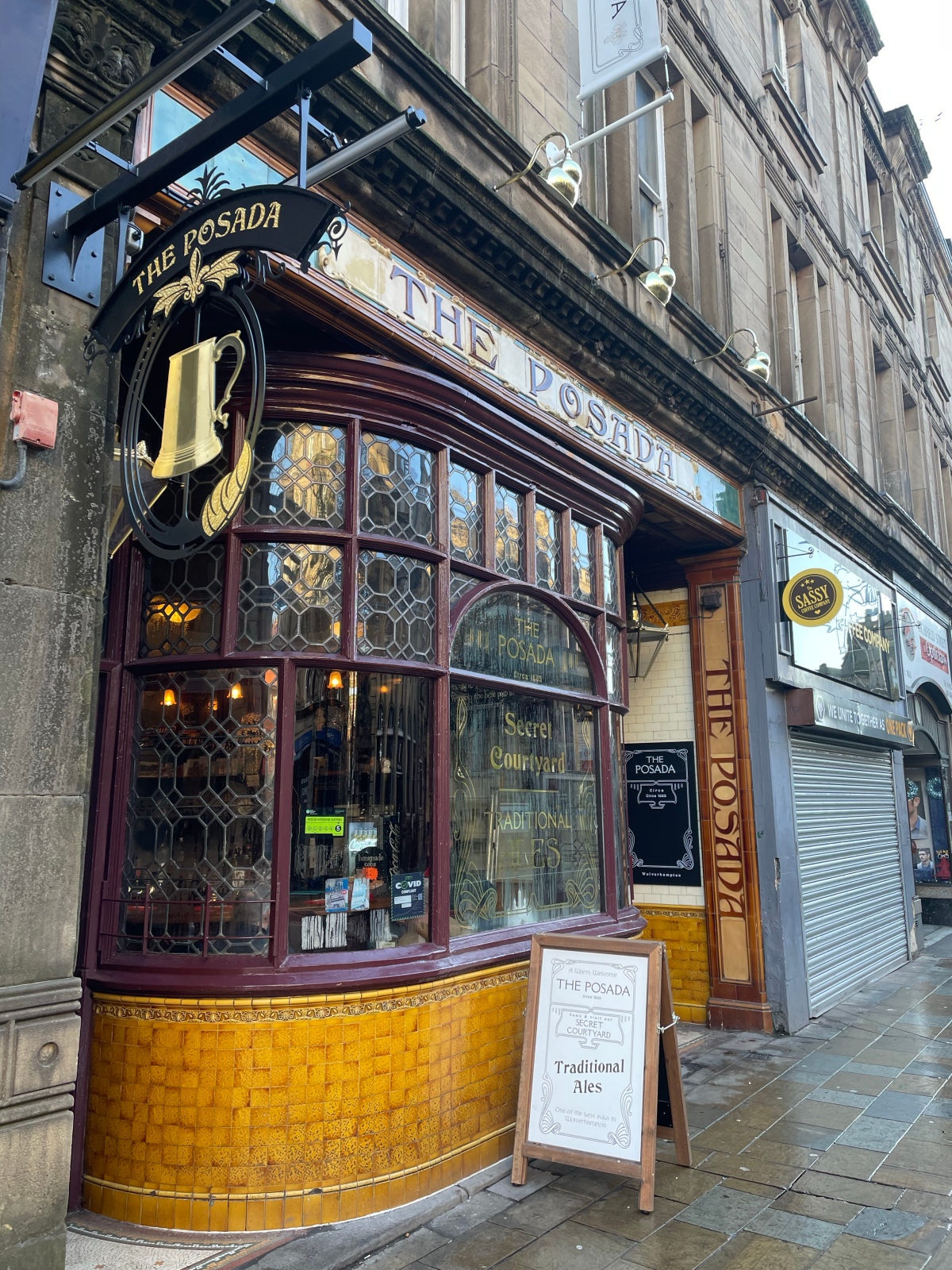Birmingham is the UK’s second city and one that includes some excellent pub names. In the spirit of mine and my dear friend Sam’s book of London pub names and my subsequent blogs for Wolverhampton and Nottingham, I’ve decided to pick some of the most interesting pub names, mainly from central Birmingham and researched the stories behind their names. Let’s crack on with the show!
Actress & Bishop
6 Ludgate Hill, B3 1EH
We start this blog in Birmingham’s Jewellery Quarter. The Actress & Bishop is located in a former jewellery workshop which was converted into a pub in 1998. The name appears to come from the old punchline “said the actress to the bishop” when telling a slightly blue joke. This inspired Brian Bollard to write a comic titled “The Actress & The Bishop which began in the 1970s. The US equivalent of this is the phrase “that’s what she said” which of course was made famous in the American version of The Office.
Bear & Staff
Selly Oak, B29 6ND
Heraldry is often depicted in pub signs and here is another classic example. The bear and staff are famously the symbol of the Earl of Warwick and therefore pubs on his land would have used this pub sign. This pub in Selly Oak still remembers this tradition, even if Birmingham and the surrounding areas were carved out of Warwickshire and Staffordshire to make the county of the West Midlands in the 1970s.
The Briar Rose
25 Bennetts Hill, B2 5RE
Our first Wetherspoons of this blog, The Briar Rose remembers a series of paintings by Birmingham-born artist Edward Burne-Jones. Born in 1833, he met William Morris at university and the two men decided to dedicate their lives to art. The paintings in question are themed around the fairytale of Sleeping Beauty.
The Figure of Eight
236-239 Broad Street, B1 2HG
I can’t do a blog about Birmingham and not mention the fact that Birmingham has more canals than Venice! Indeed, the canals are behind the name of this Wetherspoons. Given Birmingham’s central location in the country, the canal network is centred here, making a figure of eight.
The Flapper
Cambrian Wharf, Kingston Row, B1 2NU
Icons of the Roaring 1920s, flapper was the term used to describe the subculture that existed amongst young women at the time. They often bobbed their hair and listened to jazz music. Indeed the pub sign depicts a black and white painting of a flapper. The pub is a live music venue, which might explain the name.
The Head of Steam
37 Temple Street, B2 5DP
Hinting at Birmingham’s industrial past, The Head of Steam is a craft beer pub that opened in 2018. A Head of Steam is the force when steam is put under pressure, given Birmingham’s role in the Industrial Revolution, the name is a nice nod to the city’s heritage.
The Jam House
3-5 St Paul’s Square, B3 1QU
Opened by Jools Holland in 1999, this music pub is located in the Jewellery Quarter. A fairly straightforward name given the pub’s focus on live music, where jamming is the term used by musicians when improvising together.
The London & North Western
New Street Station, B2 4QE
Birmingham’s newest Wetherspoons pays homage to the railway company which built the original station in the 1840s and 1850s. The company lasted until the amalgamation of the railway companies in 1923 into the “Big Four” when the LNWR became part of the London, Midland & Scotland Railway.

The Old Contemptibles
176 Edmund Street, B3 2HB
I love this name. The Old Comtemptibles is the nickname given to the British Expeditionary Force or the BEF during the First World War. Led by Sir John French, they were responsible for delaying the German advance at Mons at the start of the war. Their actions led to Kaiser Wilhelm II ordering his generals to wipe out the “‘contemptible little army”. The nickname stuck and those heroes became known as The Old Comtempibles. So much so, that the service medal is named after them, alongside this pub next to Snow Hill station.
The Old Joint Stock
4 Temple Row West, B2 5NY
This pub and theatre is located on Temple Row, opposite Birmingham Cathedral. The building was originally built in the 1800s as a library for the cathedral but was subsequently turned into the Old Joint Stock Bank. The pubs remember the former use of the building and the dining rooms include the former Manager’s Office.
The Patrick Kavanagh
142 Trafalgar Road, B13 8BX
Located to the south of the city centre, this pub remembers the Irish poet and novelist who lived from 1904-1967. His most famous work is Tarry Flynn. Interestingly the actor Russell Crowe is a fan of his works, quoting one of his poems when he won Best Actor at the 2002 Oscars.
The Square Peg
115 Corporation Street, B4 6PH
The main Wetherspoons in Brum has a very unusual name. Most Spoons are named after local interests, such as a location, person or tradition. This one is a bit more unique, however. This pub is located in the old Lewis’s department store, and when observing the plans to convert the block into a pub, the company’s owner, Tim Martin remarked that it looked like a square peg in a round hole. The name stuck and it has been called this ever since.
The Trocadero
Temple Street, B2 5BG
A Spanish-inspired name on this occasion. Trocadero is the name of a fort near Cadiz in southern Spain which was captured in battle by the French in 1823. This victory was honoured by the building which now sits opposite the Eiffel Tower across the Seine in Paris. The name was taken on by several hotels and restaurants across Britain, including this pub on Temple Street.
So there you have it, some of Birmingham’s most interesting pub names. Have I missed an obvious one? If so, just let me know and I can always add it in!
My thanks to Danny Curtis for letting me use his great photos for this blog!
JP






